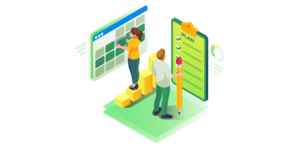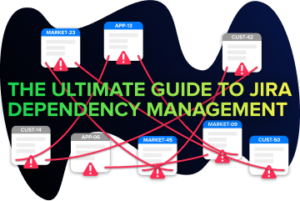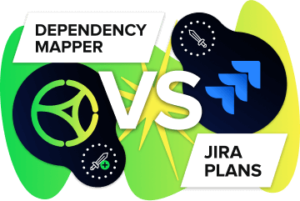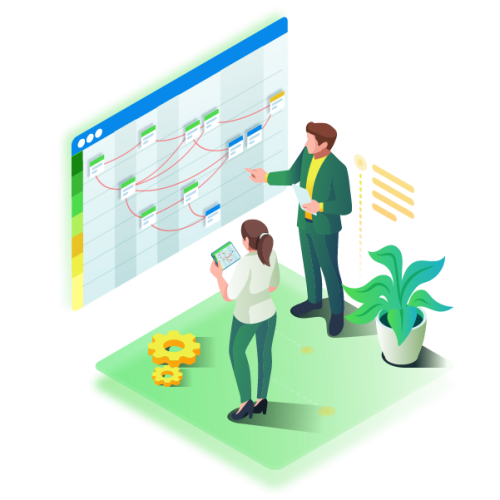If you’ve been researching project management tools, you’ve likely encountered monday.com. But what is monday.com exactly? Simply put, monday.com is a cloud-based work operating system that helps teams manage projects, workflows, and collaboration in one centralised platform.
As certified monday.com partners who’ve implemented the platform across dozens of organisations worldwide, we’ll break down everything you need to know about what monday.com is, how it works, and whether it’s the right solution for your business.
Table of Contents
ToggleWhat is monday.com? The Basics
monday.com is a visual work management platform that transforms how teams plan, track, and deliver projects. Unlike traditional project management tools that focus purely on task lists, monday.com provides a flexible workspace where teams can customise workflows to match exactly how they work.
Core Concept: monday.com organises work into “boards” – visual canvases where teams can track projects, campaigns, processes, or any type of work. Each board contains items (like tasks or projects) with customisable columns that capture the information your team needs to see.
Founded: 2012 in Tel Aviv, Israel
Public Company: Listed on NASDAQ as MNDY
Global Reach: Over 180,000 customers worldwide
Team Size: 1,500+ employees
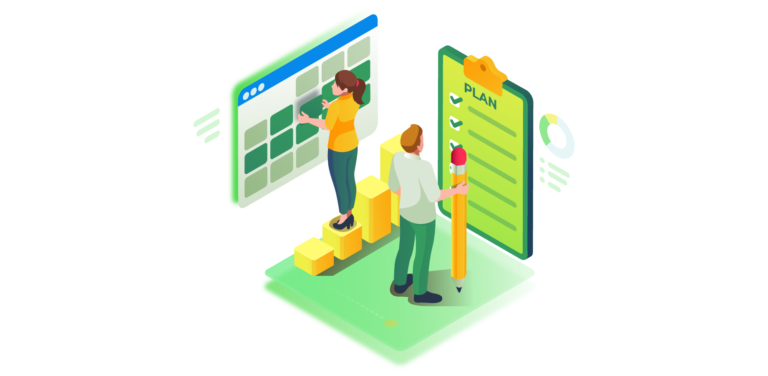
How monday.com Actually Works
Understanding what monday.com is requires seeing how its core components work together:
Boards: Your Work Canvas
Think of boards as digital whiteboards where your team’s work lives. Each board represents a project, process, or area of work. For example:
- Marketing campaigns board
- Product development roadmap
- Customer onboarding process
- Sales pipeline tracking
Items: Individual Work Units
Items are the rows in your board – individual tasks, projects, leads, or whatever you’re tracking. Each item can contain detailed information, files, updates, and sub-items.
Columns: Your Data Structure
Columns capture the information you need about each item. Choose from 30+ column types including:
- Status tracking
- Timeline and dates
- People assignment
- Priority levels
- Budget and numbers
- File attachments
- Progress tracking
Views: Multiple Perspectives
monday.com displays the same data in different formats:
- Main Table: Spreadsheet-like view
- Kanban: Card-based workflow view
- Timeline: Gantt chart for project scheduling
- Calendar: Date-based planning view
- Chart: Visual reporting and analytics
What Makes monday.com Different
Visual and Intuitive
Unlike complex enterprise tools, monday.com prioritises visual simplicity. Colour-coded statuses, drag-and-drop functionality, and clean interfaces make it accessible to non-technical users.
Highly Customisable
Every board, workflow, and automation can be tailored to your team’s specific needs. You’re not forced into rigid templates or processes.
Collaborative by Design
Real-time updates, @mentions, comment threads, and shared dashboards keep everyone aligned without endless email chains.
Automation Capabilities
Reduce manual work with hundreds of automation recipes that trigger actions based on changes, dates, or custom conditions.
What Can You Actually Do with monday.com?
Project Management
- Track project progress and milestones
- Assign tasks and monitor workloads
- Set dependencies between tasks
- Generate timeline and Gantt charts
- Monitor budgets and resource allocation
Team Collaboration
- Share files and documents
- Communicate through updates and comments
- Create shared team calendars
- Build knowledge bases with monday.com docs
- Integrate with communication tools like Slack and Teams
Process Management
- Map and optimise business workflows
- Create approval processes
- Track recurring procedures
- Monitor compliance requirements
- Standardise operations across teams
Portfolio and Strategy
- Oversee multiple projects simultaneously
- Create executive dashboards
- Track OKRs and strategic initiatives
- Monitor resource allocation across teams
- Generate portfolio-level reporting
Who Actually Uses monday.com?
Small to Medium Businesses
Teams of 2-200 people who need more structure than spreadsheets but don’t want enterprise complexity.
Marketing and Creative Teams
Campaign management, content calendars, creative workflows, and client collaboration.
Software Development Teams
Sprint planning, bug tracking, feature development, and release management (though less common than dedicated dev tools).
Operations and HR Teams
Employee onboarding, vendor management, facility planning, and process documentation.
Professional Services
Client project delivery, resource planning, time tracking, and client communication.
monday.com vs. Traditional Project Management Tools
Traditional Tools (like MS Project)
- Focus on scheduling and resource allocation
- Complex setup and steep learning curves
- Rigid structures and limited customisation
- Primarily for project managers
monday.com Approach
- Visual, intuitive interface for all team members
- Flexible workflows that adapt to any process
- Collaboration-first design
- Easy setup with immediate value
What monday.com Costs
Free Plan
- Up to 2 users
- 3 boards
- Basic features and templates
Basic Plan ($8 USD per user/month)
- Unlimited users
- Unlimited boards
- 5GB storage per user
- Basic integrations
Standard Plan ($10 USD per user/month)
- Timeline and Gantt views
- Calendar view
- Guest access
- Automations and integrations
Pro Plan ($16 USD per user/month)
- Time tracking
- Advanced reporting
- Chart views
- Advanced integrations
Enterprise Plan (Custom pricing)
- Advanced security
- Multi-level permissions
- Premium support
- Custom onboarding
Common monday.com Use Cases
Marketing Teams
Campaign planning, client approval workflows, content calendar management, and project delivery tracking.
Construction and Project Management
Project scheduling, contractor coordination, compliance tracking, and progress reporting.
Retail and E-commerce
Inventory management, vendor coordination, seasonal planning, and operations management.
Professional Services
Client onboarding, project delivery, resource allocation, and time tracking.
Healthcare and Medical Practices
Patient scheduling, compliance management, equipment tracking, and staff coordination.
Getting Started with monday.com
Step 1: Choose Your Template
monday.com provides hundreds of pre-built templates for common use cases, or start with a blank board.
Step 2: Customise Your Workflow
Add columns that capture the information your team needs to track and modify statuses to match your process.
Step 3: Invite Your Team
Add team members and set appropriate permissions for viewing and editing.
Step 4: Set Up Automations
Create rules that automatically update statuses, send notifications, or assign tasks based on triggers.
Step 5: Build Your Dashboard
Create visual overviews that give stakeholders the insights they need without diving into detailed boards.
Limitations to Consider
Learning Curve for Complex Setups
While basic boards are intuitive, advanced features like complex automations and reporting require time to master.
Cost at Scale
For large teams, monthly costs can become significant, especially if you need advanced features.
Integration Limitations
While monday.com integrates with many tools, some integrations are surface-level and may not sync all the data you need.
Reporting Constraints
Advanced reporting and analytics capabilities lag behind specialised business intelligence tools.
monday.com is used for project management, team collaboration, process tracking, and workflow automation. Teams use it to replace spreadsheets, email chains, and disconnected tools with one visual platform.
Yes, monday.com is designed to scale from small teams to large enterprises. Small businesses often find it provides structure and professionalism without overwhelming complexity.
monday.com offers more customisation and visual flexibility than Trello, and more intuitive setup than Asana. It focuses heavily on visual project tracking and cross-functional collaboration.
For project tracking and collaborative workflows, yes. monday.com provides much better collaboration, automation, and visualisation than spreadsheets, though it’s not designed for complex calculations.
Marketing agencies, creative teams, construction companies, professional services, and operations teams across various industries commonly use monday.com.
Yes, monday.com provides enterprise-grade security including SOC 2 Type II compliance, GDPR compliance, and various security certifications required for business use.
Basic setups can be running within hours, but comprehensive implementations across multiple teams typically take 2-4 weeks depending on complexity and training requirements.
monday.com integrates with 200+ popular business tools including Slack, Microsoft 365, Google Workspace, Salesforce, HubSpot, and many others.
monday.com provides 24/7 customer support, extensive documentation, video tutorials, and webinar training. Enterprise plans include dedicated customer success managers.
Yes, monday.com offers native iOS and Android apps with full functionality for managing work on the go.
Making the Right Choice for Your Business
Understanding what monday.com is helps you evaluate whether it fits your team’s needs:
Choose monday.com if:
- You need visual project tracking
- Your team values collaboration and transparency
- You want to customise workflows without technical complexity
- You’re replacing spreadsheets and email-based project management
- You need something more flexible than traditional project management tools
Consider alternatives if:
- You need advanced financial project tracking
- Your team prefers simple, minimalist tools
- You require extensive offline functionality
- Budget is a primary constraint for larger teams
The Bottom Line
So, what is monday.com? It’s a visual work operating system that bridges the gap between simple task lists and complex enterprise project management. It provides the structure and visibility teams need to deliver consistent results while remaining flexible enough to adapt to how your team actually works.
The platform excels at making work visible, improving team collaboration, and eliminating the chaos of managing projects across spreadsheets and email. For businesses looking to scale their operations while maintaining team alignment, monday.com offers a compelling solution.

Book Your Free Consultation
Not sure which plan is right for your team? Book a complimentary 15-minute discovery call with our monday.com specialists. We’ll help you understand exactly what you need and how to set it up for success.
Quirk is a certified monday.com partner helping Australian businesses implement work management systems that actually work. We believe if you can see it, you can solve it.




